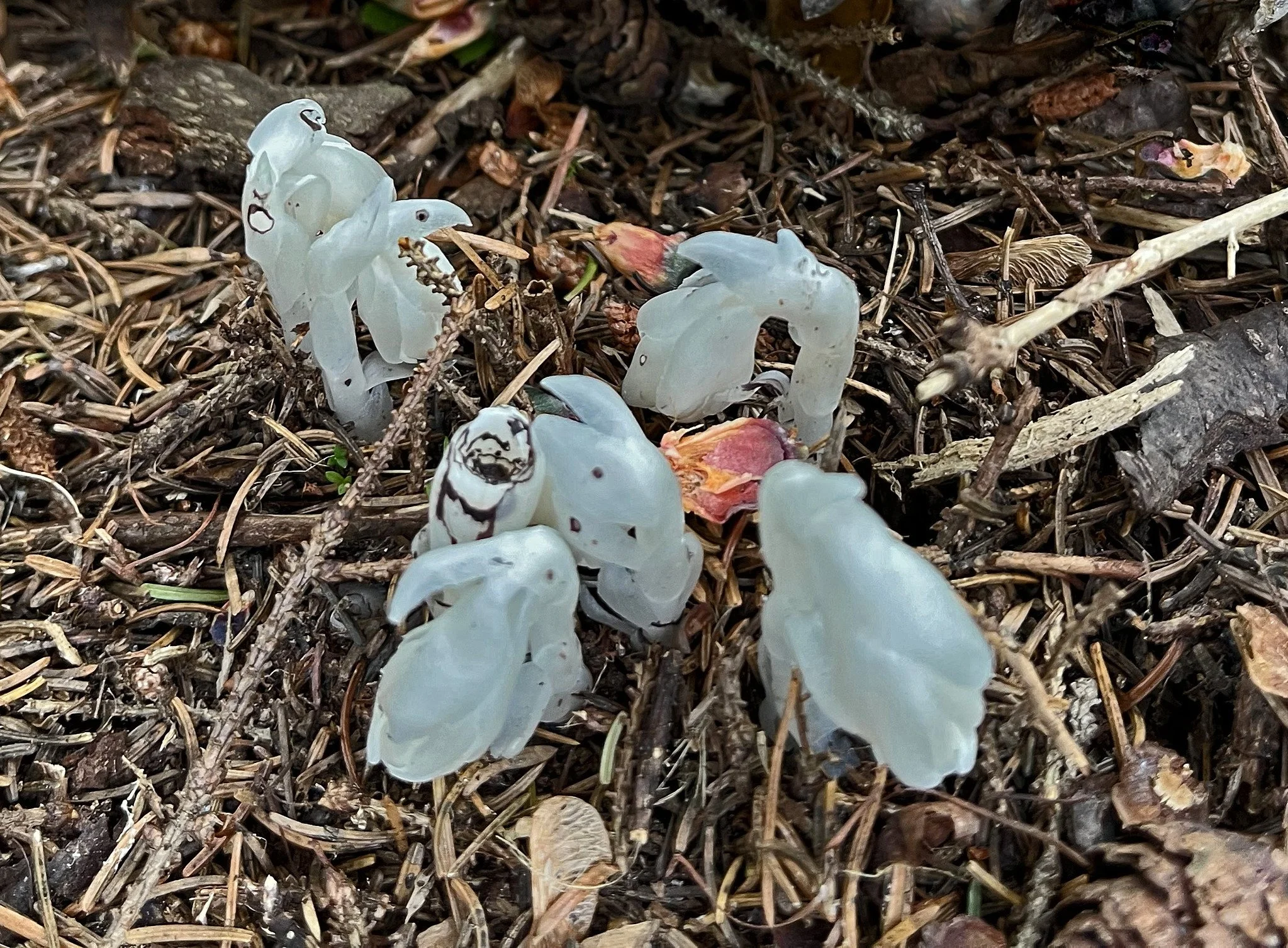This colorless growth is uncommon, but not rare; it is mushroom-like, but is a plant; it was Emily Dickenson’s favorite wildflower, but was considered by Native Americans as spirits of the dead, and it recently has accumulated cultish followers who reportedly are causing a raging health controversy.
It’s Monotropa uniflora, more commonly called Indian pipe, ghost pipe, corpse pipe, corpse plant, ghost flower, and/or ice plant. It is a wildflower that amazingly survives without chlorophyll for photosynthesis. Instead, it gets its nutrients from a parasitic relationship with mycorrhizal fungi in the soil. It’s usually porcelain white, but sometimes grows pinkish or (rarely) reddish in certain soils.
According to a Native American legend, the plant was the ghosts of warring chiefs who smoked peace pipes, but refused to compromise and make peace. The Great Spirit turned them into a colorless group that didn’t warrant attention. But Emily paid attention to them by collecting them and considering them “the preferred flower of life” (whatever that means).
In May, the Washington Post published a lengthy report by Ashley Stimson on a raging debate in the social media among foragers and outdoors enthusiasts over Indian pipe’s benefits or lack thereof. The plant reportedly is being promoted as a nutrient supplement that will make you “feel very Zen,” kill pain, and treat anxiety, panic attacks, insomnia, migraines, and muscle spasms.
I’m not recommending that you consume it. (Images taken in Brooklin, Maine, on August 5, 2025.)

